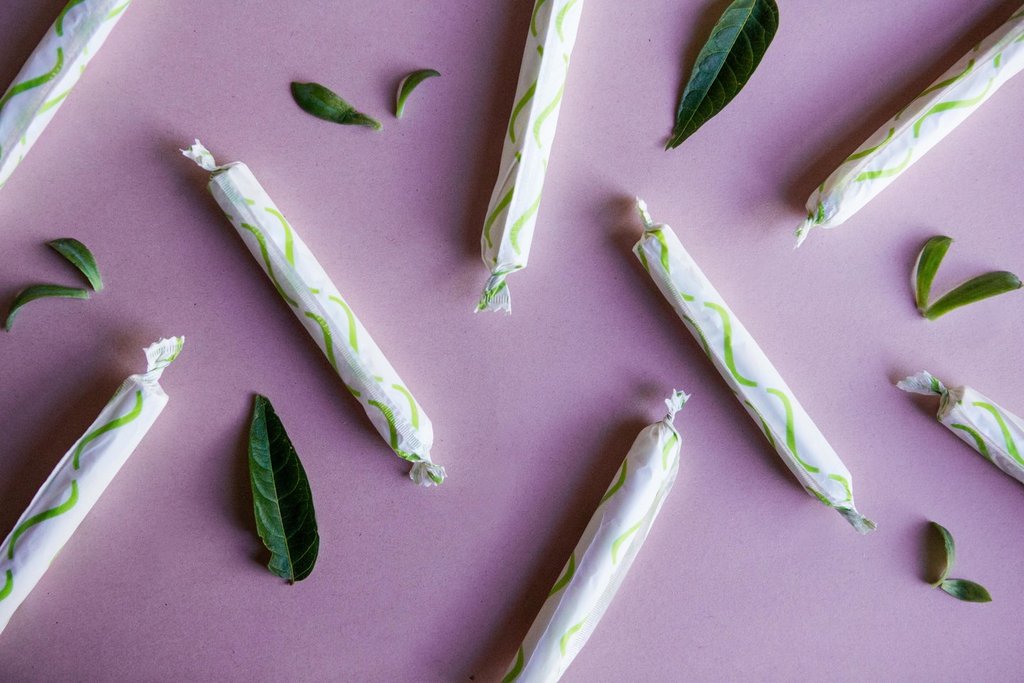 It seems like every few weeks there is a new buzzword in the health world. Kale, kombucha, dry brushing, oil pulling, I can’t keep up. I’m all for new knowledge but I’m also about simplifying and learning to scale back and live with less rather than more.
It seems like every few weeks there is a new buzzword in the health world. Kale, kombucha, dry brushing, oil pulling, I can’t keep up. I’m all for new knowledge but I’m also about simplifying and learning to scale back and live with less rather than more.
Before I launched easy. I hadn’t even heard of organic feminine hygiene products and the words alone would have made my eyes roll. It was only through doing research to source the products I wanted to sell that I began learning disturbing facts about the products I was currently using. What I’ll do below is lay out some of the evidence I was glad to discover, and let you make an informed decision of your own:
How much do you currently know about the object you insert into your vagina each month?
If you’re anything like me, probably not that much. This is a bit disturbing considering the average woman uses about 12, 000 tampons in her lifetime (1). Why are these products so mysterious? Perhaps they are deliberately vague to avoid explicitly stating their makeup and ingredients?
The earliest tampon like devices were recorded in the 18th and 19th century with their use becoming widespread around World War II. With women’s increased involvement outside the home, the new Tampax tampons available for 35 cents gained popularity (2).
The next major tampon product on the market was developed by Proctor and Gamble in 1975 and called “Rely.” Around the same time legislation changed and tampons begun to be classified as “medical devices” rather than “cosmetics,” this is important because medical devices are not required to have their ingredients listed on their packaging (2).
Rely tampons were later taken off the market after 812 cases of Toxic Shock Syndrome (TSS) were reported in 1980 - 38 leading to death (3).
The link between these products and TSS was later discovered to be the synthetic materials used like polyester and rayon which created a breeding ground for bacteria in the vagina (2). The tampon industry evolved, adding absorbancies like regular and super, adding warning labels about TSS to tampon packaging and discontinuing use of many of the synthetic materials, however viscose rayon is still commonly used today.
The reality remains that conventional tampon brands engage in some form of bleaching.
Many have improved methods like ensuring chlorine free bleaching. Of note, is that this only reduces the presence of the harmful chemical byproduct- dioxin- to trace levels (2). I’m not sure about you but trace levels of toxic chemicals in the super permeable tissue of my vagina doesn’t sound ideal to me.

The good news, we’ve got OPTIONS baby. I’ve listed a few below with links to some great sites where you can learn more:
Menstrual Cups: I have never tried them personally but I know that they are a sustainable and environmentally friendly option for menstrual hygiene.
Organic Tampons: Made with 100% organic cotton with no artificial fibers. Bleached with naturally occurring hydrogen peroxide, absolutely no plastic used.
Cloth pads: Washable and reusable cloth pads.
Sea Sponges: Naturally occurring sea sponges that can be rinsed out and reused.
So ladies take the time to do your homework on these products that you are interacting with so intimately. Just like with anything else, don’t just eat what you’re fed.
Make sure that you’ve made an informed decision that you feel good about in caring for your body during menstruation.
-
Tampon Safety (2016). http://center4research.org/i-saw-it-on-the-internet/tampon-safety/
-
The tampon: A history (2015). http://www.theatlantic.com/health/archive/2015/06/history-of-the-tampon/394334/
-
Under Wraps: A History of Menstrual Hygiene Technology (2008) By Sharra Louise Vostral


 It seems like every few weeks there is a new buzzword in the health world. Kale, kombucha, dry brushing, oil pulling, I can’t keep up. I’m all for new knowledge but I’m also about simplifying and learning to scale back and live with less rather than more.
It seems like every few weeks there is a new buzzword in the health world. Kale, kombucha, dry brushing, oil pulling, I can’t keep up. I’m all for new knowledge but I’m also about simplifying and learning to scale back and live with less rather than more.